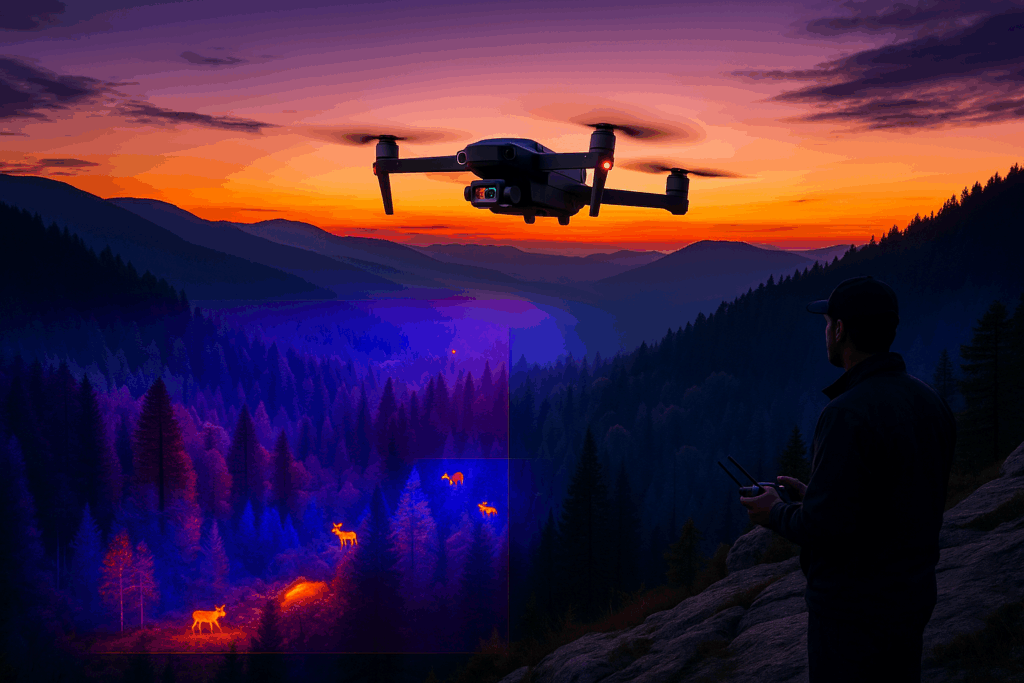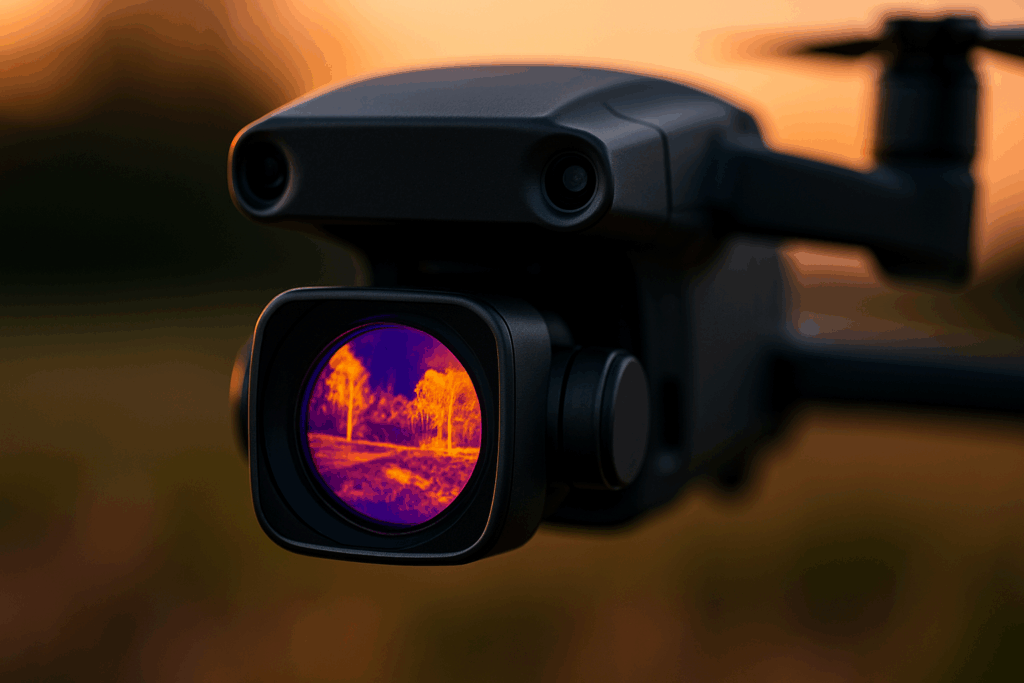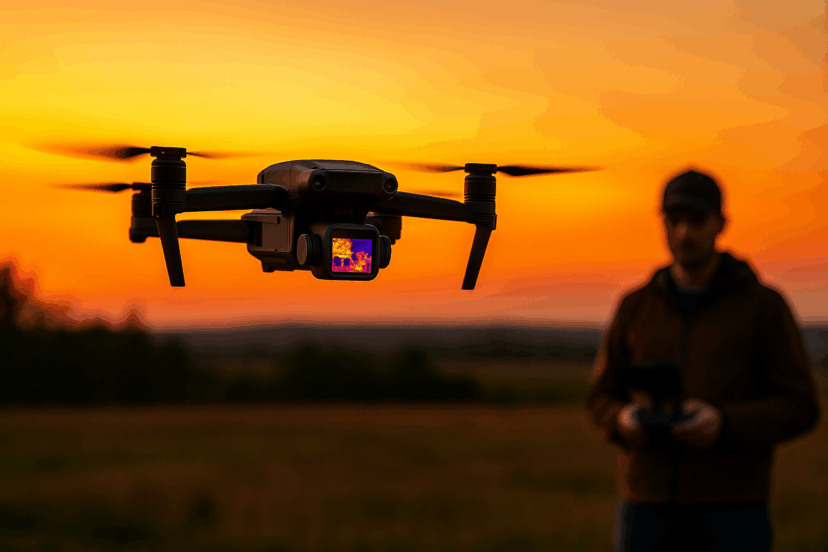Best Drone with Thermal Camera: Top Picks for 2025
We may earn a commission for purchases made using our links. Please see our disclosure to learn more.
Drones are evolving fast, and today, getting a drone with thermal camera is easier and more affordable than ever. Whether you’re in search and rescue, farming, building inspection, or just curious about the technology, a thermal drone opens new possibilities. In this guide, we’ll help you find the best options for 2025, plus what you need to know before buying.
What Is a Drone with Thermal Camera?
Simply put, a drone with a thermal camera captures images based on heat, not visible light. Instead of the traditional visuals we’re used to, these drones detect heat signatures — showing the temperature differences in landscapes, buildings, or even living beings.
Thermal drones are especially valuable when visibility is low or when fine details matter more than colorful imagery.
Why You Might Need a Drone with Thermal Camera
Thermal drones aren’t just for high-end industries anymore. Here are a few reasons you might want one:
- Search and Rescue: Finding missing persons in hard-to-reach areas.
- Agriculture: Monitoring crop health and irrigation issues.
- Construction: Inspecting roofs, leaks, and structural issues.
- Firefighting: Locating hotspots invisible to the naked eye.
- Security: Monitoring property in total darkness.
For anyone curious about the science behind how thermal imaging works and how drone technology fits into modern innovation, you might find hands-on STEM activities a fun way to dive deeper into the world of tech and engineering.

Best Drones with Thermal Cameras in 2025
After digging deep into features, reviews, and expert insights, here are the top thermal drones this year:
1. Drone with 4K Camera and Thermal Imaging
This drone offers a combination of 4K video capabilities and thermal imaging, making it suitable for various applications, including agriculture and surveillance.
Key features:
- 4K UHD camera with image stabilization
- Integrated thermal imaging camera
- 3-axis gimbal for smooth footage
- Up to 34 minutes of flight time
- Gravity sensor function
Perfect for: Users seeking a versatile drone with both visual and thermal imaging features.
2. Autel Robotics EVO II Dual 640T
The EVO II Dual 640T stands out with its 8K visible light camera paired with a strong thermal sensor. It’s a powerhouse for professionals.
Key features:
- Picture-in-picture thermal overlay
- 38-minute flight time
- High-temperature alerts
Perfect for: Those needing high-quality visuals and thermal data at once.
3. Parrot Anafi
Suitable for emergency services and construction inspections, the Parrot Anafi Thermal is a small and lightweight drone that combines a FLIR thermal sensor and a 4K HDR camera.
Key features:
- FLIR thermal sensor with 160×120 resolution
- 4K HDR camera with 21MP Sony sensor
- 3-axis hybrid stabilization
- Up to 26 minutes of flight time
- USB-C charging
Perfect for: Inspectors and emergency responders needing a portable thermal imaging solution.
4. Drone Equipped with 1080P Camera and Thermal Imaging
This quad-rotor drone features a 1080P camera and thermal imaging, offering a flight time of 34 minutes and a gravity sensor function, ideal for various applications.
Key features:
- 1080P HD camera with thermal imaging
- 34-minute flight time
- Gravity sensor function
- One-key takeoff/landing
- Durable and flexible material for protection
Perfect for: Beginners and enthusiasts seeking a drone with thermal imaging at an accessible price point.
How to Choose the Right Thermal Drone
Buying the best drone with thermal camera isn’t just about price or brand. Here’s what you should focus on:
Resolution Matters
A low-resolution sensor might save you money, but it won’t deliver clear results when it counts. Look for drones offering at least 640×512 resolution if you want professional-grade imaging.
Flight Time and Range
Thermal inspections often cover large areas. A longer flight time means fewer interruptions. Aim for drones that can stay airborne for at least 30 minutes per charge.
(Internal link idea: Link “flight time” to a post about “tips to extend drone battery life.”)
Ease of Use and Software
Make sure the drone integrates well with software that can process thermal data. Easy-to-use mobile apps and good post-processing tools can make your missions a lot smoother.
Scientific Research Supporting the Power of Thermal Drones
Thermal drones aren’t just a cool gadget; they’re backed by solid research across multiple industries. Here’s a glimpse at how science is proving their real-world value:
UAV-Thermal Imaging for Crop Health Monitoring
A comprehensive review titled “UAV-thermal imaging: A technological breakthrough for monitoring abiotic stress in crops” highlights the role of thermal drones in agriculture. The study reveals that thermal imaging from drones can detect early signs of abiotic stress — like drought or nutrient deficiency — long before visible symptoms appear. Farmers can use this data to optimize irrigation, improve yields, and minimize resource wastage, revolutionizing how we approach crop management.
Improving Wildlife Surveys with Thermal Drone Technology
Thermal drones are also reshaping wildlife conservation efforts. According to a study titled “Study tests accuracy of thermal drone surveys”, researchers found that drones equipped with thermal cameras produce wildlife population estimates comparable to traditional ground surveys. The findings suggest that thermal drones not only improve survey efficiency but also reduce human disturbance in sensitive habitats, making them a valuable tool for ecological studies and conservation projects.

Final Thoughts
The world of thermal drones keeps growing, and 2025 brings impressive options for hobbyists, business owners, and professionals alike. Whether you’re surveying land, saving lives, or inspecting rooftops, there’s a drone ready to meet your needs.
When you’re ready to buy, prioritize what matters most: image quality, flight time, reliability, and ease of use. Invest smartly and soar into a new realm of possibilities!
FAQs
1. What industries use drones with thermal cameras?
Thermal drones are popular in industries like agriculture, construction, firefighting, law enforcement, wildlife monitoring, and energy inspections.
2. Is it possible to fly a thermal drone at night?
Yes, and that’s actually where they shine! Since thermal cameras detect heat, not visible light, night flying is one of their strongest advantages.
3. How much does a thermal camera-equipped drone cost?
Prices range widely. Entry-level models start around $1,500, while advanced enterprise-grade drones can exceed $10,000.
4. Are thermal drones legal for personal use?
In most countries, yes! However, you must follow local drone regulations, especially regarding privacy and airspace rules.
5. What’s the best entry-level thermal drone?
The Parrot Anafi is a solid entry-level choice offering a mix of performance, price, and ease of use without the heavy investment of enterprise models.




